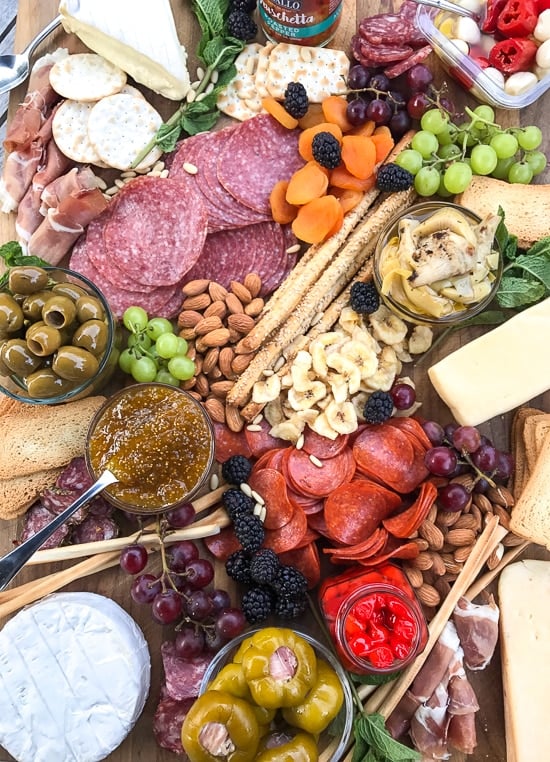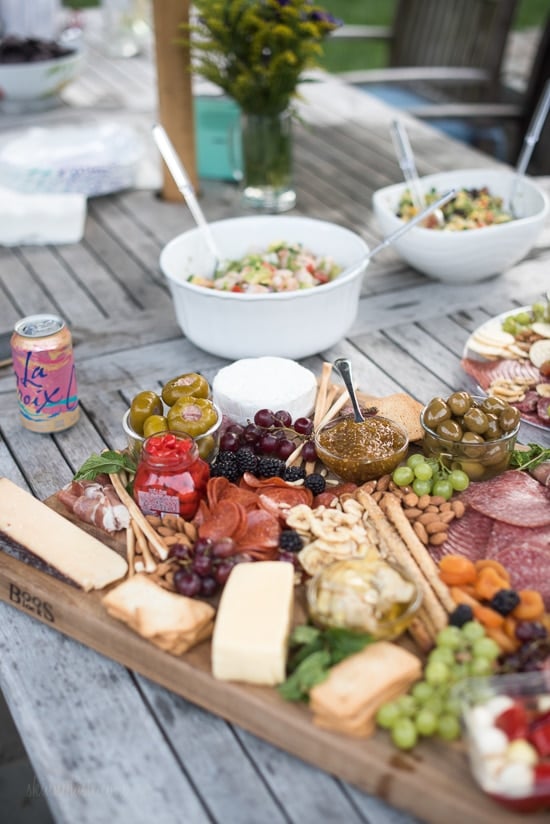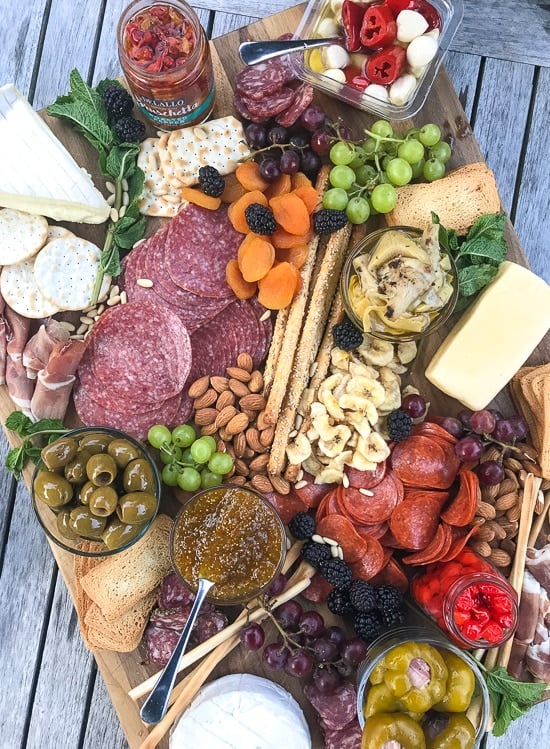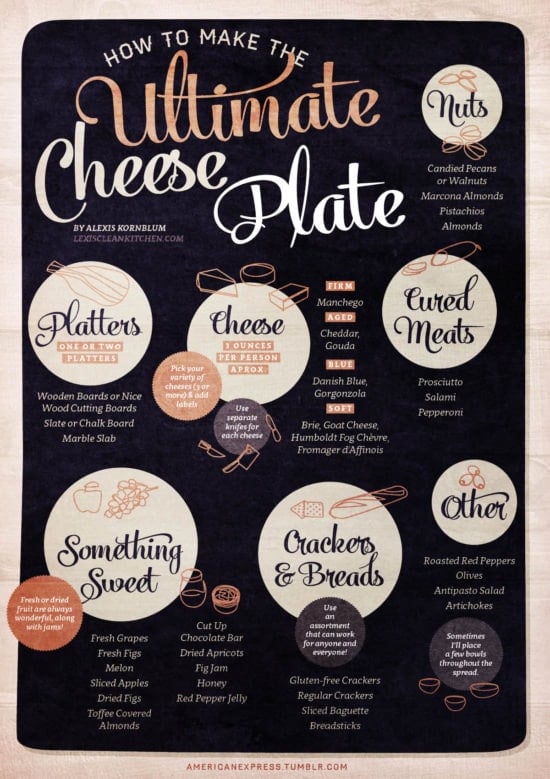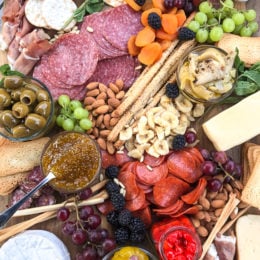How To Make an Epic Charcuterie Board
Meat and cheese boards are my go-to for super chill, no stress year-round entertaining. With a little bit of planning and creativity, you can create a stunning and tasty charcuterie board that will impress your guests whether you are entertaining for 4 or 40 people. Load up your charcuterie boards with all your favorite cheese, cured meats, fruit, nuts and spreads. Add a salad platter, or a pasta salad, some wine and baguettes and you have yourself a meal!
I co-hosting a blogger retreat with Lexi of Lexi’s Clean Kitchen and Liz of the Lemon Bowl in a beautiful house in Water Mill, NY. Lexi and I made two Charcuterie and Cheese Boards (a gluten-free, allergy-friendly one not pictured here) with lots of hot dips, Sangria, wine, plus avocado shrimp salad, and my Southwestern black bean salad for there arrival. Charcuterie boards, also known as meat and cheese boards, are a delicious and visually appealing way to serve a variety of meats, cheeses, and accompaniments at a party or as a snack. They are easy to assemble and can be customized to fit any occasion or dietary preference. Here’s how to make your own charcuterie board at home:
How To Make A Charcuterie Board
Charcuterie Board Ideas
There are endless options for what to include on a charcuterie board. Here are a few ideas to get you started:
Cured meats: Prosciutto, genoa salami, chorizo, sopressata, ham, and cured sausages are all classic choices for a charcuterie board. Cheese: Choose a variety of textures and flavors. A few options are soft brie, burrata and camembert. For firm cheese oprions try cheddar, manchego, Parmesan and gouda. And creamy options like creamy blue cheese, gorgonzola or goat cheese. My personal favorite hard cheese is Bella Vitano Merlot. Accompaniments: Olives, pickles, cornichons, nuts, baguette slices, bread sticks and crackers are all great options. They add flavor and texture to your charcuterie board. Fruit: Choose whatever fresh fruit is in season. Some options are grapes, raspberries, blueberries, pears, sliced apples, figs, strawberries or raspberries. You can also opt for dried fruit such as dried apricots or cranberries. Spreads and dips: Hummus, tapenade, and other spreads and dips can add flavor and variety to your board. Vegetables: Roasted vegetables, such as bell peppers, eggplant, and zucchini, add color and flavor to the board. Specialty items: Consider adding some unique or specialty items to your charcuterie board, like artisanal jams, honey, or mustards. Fresh Herbs: Herbs that don’t wilt such as rosemary or thyme make a beautiful addition to a board for color and visual appeal.
The key to a successful charcuterie board is to include a variety of flavors and textures, and to arrange the items in a visually appealing way. Have fun experimenting and creating your own unique charcuterie board!
How to Pronounce Charcuterie Board
The word “charcuterie” is pronounced as “shahr-koo-tuh-ree.” The word “board” is pronounced as “bawrd.” So, the phrase “charcuterie board” is pronounced as “shahr-koo-tuh-ree bawrd.”
What region is a Charcuterie Board from?
Charcuterie is the art of preparing and presenting cured meats. It comes from the French words “chair” (meat) and “cuit” (cooked). Charcuterie boards usually have a variety of cured meats, cheese, bread, and other accompaniments. They are popular in France, Italy, Spain, and the US. In France, they are often served as a starter or light meal with wine. Elsewhere, they may be served as part of a meal or as a snack or appetizer at parties or social events.
There really is an art to making photo-worthy, mouth-watering platters. Varying the colors and textures, a variety of meat and cheese options, and lots of fresh items is the secret to success. For a smaller crowd, use smaller boards or platters. If you make one, I’d love to see it! Please tag @skinnytaste on Instagram and I will re-gram the prettiest photos!
More Boards You May Love
Crudite Platter Antipasto Salad Platter Grilled Veggie Platter Bagel Brunch Board Sheet Pan Pancake Board
photo credit: Raul Velasco

